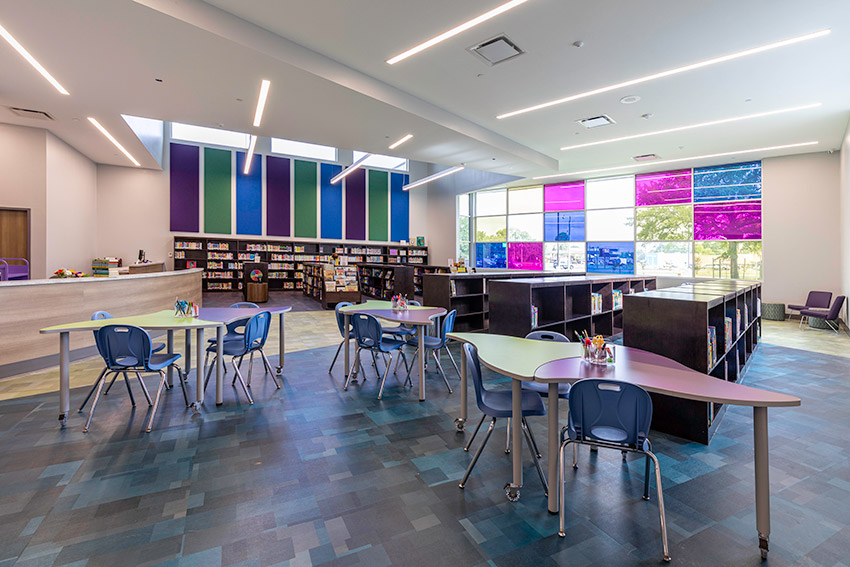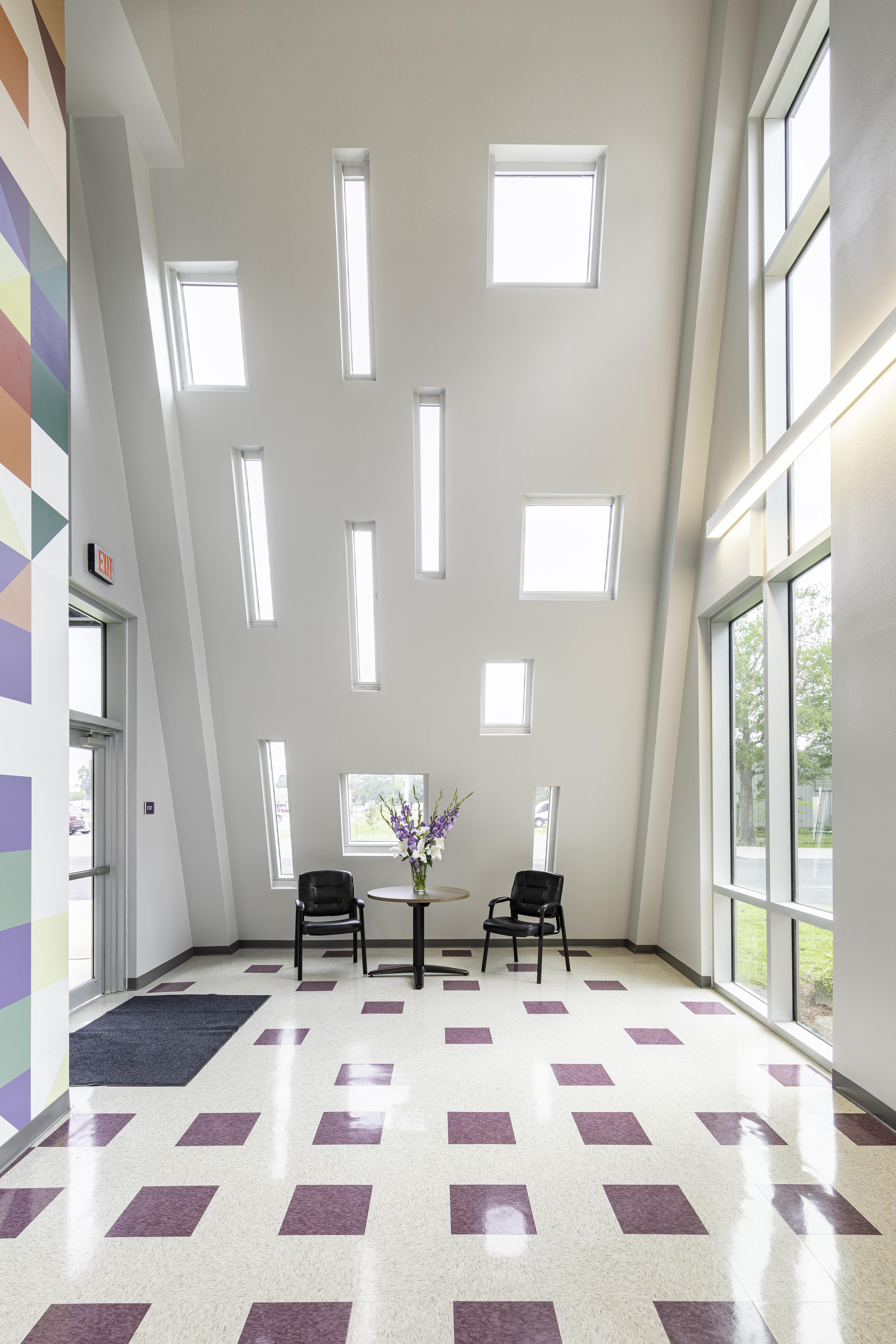Illuminating Spaces
 1 AIA LU/HSW; 1 IDCEC CEU/HSW; 0.1 ICC CEU; 0.1 IACET CEU*; 1 AIBD P-CE; AAA 1 Structured Learning Hour; This course can be self-reported to the AANB, as per their CE Guidelines; AAPEI 1 Structured Learning Hour; This course can be self-reported to the AIBC, as per their CE Guidelines.; MAA 1 Structured Learning Hour; This course can be self-reported to the NLAA.; This course can be self-reported to the NSAA; NWTAA 1 Structured Learning Hour; OAA 1 Learning Hour; SAA 1 Hour of Core Learning
1 AIA LU/HSW; 1 IDCEC CEU/HSW; 0.1 ICC CEU; 0.1 IACET CEU*; 1 AIBD P-CE; AAA 1 Structured Learning Hour; This course can be self-reported to the AANB, as per their CE Guidelines; AAPEI 1 Structured Learning Hour; This course can be self-reported to the AIBC, as per their CE Guidelines.; MAA 1 Structured Learning Hour; This course can be self-reported to the NLAA.; This course can be self-reported to the NSAA; NWTAA 1 Structured Learning Hour; OAA 1 Learning Hour; SAA 1 Hour of Core Learning
Learning Objectives:
- List some of the mental health benefits daylighting can provide.
- Explain why the use of glass and glazing products is important to consider in the design phase.
- Describe protective glass products and how they might impact occupant mental health.
- Discuss the ways in which glazing can maximize views and support mental well-being.
This course is part of the Glass and Glazing Design Academy
Architects and designers have recognized the need to create spaces that not only meet functional requirements but also prioritize the mental and emotional well-being of occupants. In this context, glazing, with its unique ability to connect indoor and outdoor spaces, has emerged as a powerful tool for supporting this vital goal. By harnessing the transformative potential of natural light and views, architectural glazing enhances the physical aesthetics of a space while having a profound impact on the psychological and emotional experience of those within it. This course explores the significant role of glazing in promoting mental health and well-being and discusses how designers can effectively incorporate this element to nurture and support individuals in their daily lives.

Photo: Matthew Cassity; courtesy of TBA Studio
A classroom in the new Boley Elementary School in West Monroe, Louisiana. A playful color palette is seen throughout the building, creating a stimulating and positive atmosphere, ideal for primary school settings.
THE IMPORTANCE OF DAYLIGHTING AND VIEWS
Daylighting—the practice of incorporating natural light into the design of buildings—has a rich history spanning thousands of years. Throughout different periods and architectural styles, architects have recognized the benefits of daylight in creating comfortable and aesthetically pleasing spaces. Still, there have been times in which designers chose artificial lighting over daylighting in response to increasing electrical technologies, among other reasons.
In more recent decades, daylighting has reemerged as a critical aspect of green building and healthy design, incorporating strategies like solar orientation, shading devices, light redirecting systems, and efficient glazing to maximize natural light while minimizing heat gain and glare. In addition, ongoing research has shown that humans occupying the built environment require natural light, views, and ventilation to maintain their health and well-being—and, in fact, thrive.
In the architecture, engineering, and construction industry, mental health is gaining attention and being prioritized when designing buildings and specifying materials. Glass is a key product that can optimize both mental and physical health—whether at home, school, work, or in medical centers—and larger glass sizes are being used to increase natural daylight and views.

Photo: Benjamin Benschneider; courtesy of Sentech Architectural Systems
Expedia Group’s new Seattle headquarters. The facade features insulating glass units with a (pre-tensioned) cable-supported structural glass wall system.
Glazing and Mental Health
Glazing allows natural light to enter a building, creating a connection to the outdoors and providing views of the surrounding environment. Access to natural light has been linked to improved mood, increased productivity, and better overall mental health. It can enhance the occupants' sense of well-being and create a more pleasant and stimulating environment.
Architectural glazing can be part of biophilic design, which aims to incorporate elements of nature into built environments. Views of nature, such as greenery or water features, can have a calming effect, reducing stress, and improving cognitive function.
Large windows or open glass partitions can promote visual connectivity between spaces and encourage social interaction among occupants. The transparency of architectural glazing can create a sense of openness and spaciousness in interior spaces, which can contribute to a feeling of freedom, reduce feelings of confinement, and alleviate symptoms of claustrophobia or anxiety.
Glazing systems can also help satisfy our need for safety. The right design can provide connectivity to the outside world and, at the same time, provide privacy and security.
Circadian Rhythms
How—exactly—does daylighting affect the body? Let’s start with circadian rhythm. The circadian rhythm is a natural, internal process that regulates the sleep-wake cycle and various other physiological and behavioral processes in living organisms, including humans. It is often referred to as the "body clock" or the “biological clock.” The term “circadian” comes from the Latin words “circa” (meaning “around”) and “diem” (meaning ”day”), reflecting the fact that these rhythms occur on a roughly 24-hour cycle.
In humans, the circadian rhythm is primarily influenced by environmental cues, with the most significant one being the daily light-dark cycle. Specialized cells in the retina of the eye called ganglion cells detect light and send signals to the brain, which is considered the master pacemaker of the circadian system. The SCN, located in the hypothalamus, synchronizes various bodily functions and processes to align with the external light-dark cycle. It regulates the release of hormones, body temperature, metabolism, cognitive functions, and even mood. Melatonin is a key player in the circadian rhythm, as its secretion is regulated by the SCN and helps regulate sleep.
Disruptions to the circadian rhythm, such as irregular sleep patterns, shift work, jet lag, or exposure to artificial light at night, can have adverse effects on human health and well-being. Physical effects of disrupted circadian systems could span everything from cardiovascular disease to cancer. Mental effects can include irritability, depression, negative mood, impaired memory, and anxiety—all of which can compound over time into chronic mental illness. Poor mental health also feeds into poor physical health, and vice versa.
On the other hand, people with aligned circadian rhythms tend to experience the opposite: stable or elevated moods, lower stress, and higher cognitive function, which tends to lead to good coping skills, positive social interactions, motivation and productivity, and a more positive sense of self and the surrounding environment. These types of positive changes also have a compounding effect; they often help prevent chronic illness and lead to decision-making that perpetuates good mental health.
Schools and Mental Health
Research has shown that integrating architectural glazing in educational settings produces a multitude of benefits significantly impacting the health, growth, and performance of building occupants. One of the most notable mental health outcomes is the increase in attendance for both students and teachers. Well-designed glazing that allows ample natural light to flood the classrooms and common areas results in students feeling more energized and engaged and leads to a higher level of enthusiasm for attending school. Teachers also benefit from improved well-being and job satisfaction since natural light positively impacts mood and overall sense of comfort. Students achieve 5-14 percent higher test scores and learn 20-26 percent faster when classrooms have access to daylight and views.
Architectural glazing in educational spaces has also been linked to a marked improvement in student behavior. Studies have consistently shown that students in windowless classrooms exhibit more hostile and disruptive behaviors compared to their counterparts in classrooms with ample natural light. The exposure to natural light and outdoor views through glazing helps create a sense of tranquility and reduces feelings of confinement, resulting in better student behavior and a more conducive learning environment.
Anecdotal evidence from teachers further supports the positive impact of glazing with views of nature. Teachers have reported having access to better windows and natural views helped them and their students stay calm and regroup during times of heightened stress. Additionally, studies have shown that a lack of daylight can disrupt hormone patterns in children, making it more challenging for them to concentrate and collaborate effectively with their peers. These effects can have significant long-term consequences, not only on academic performance and overall growth but on their general mental health.

Photo: Matthew Cassity; courtesy of TBA Studio
The new daylit and colorful interior of Boley Elementary School designed by TBA Studios helped students and teachers get back to learning as soon as possible after a 2019 fire destroyed the previous building.










